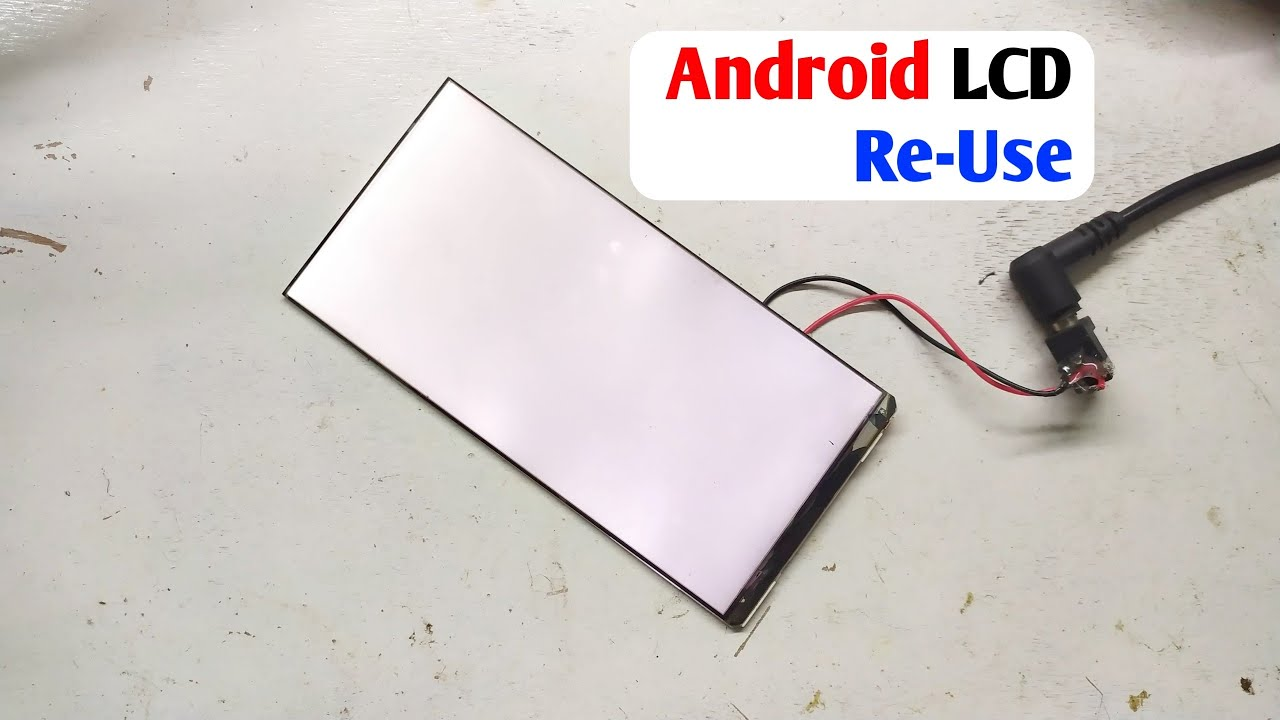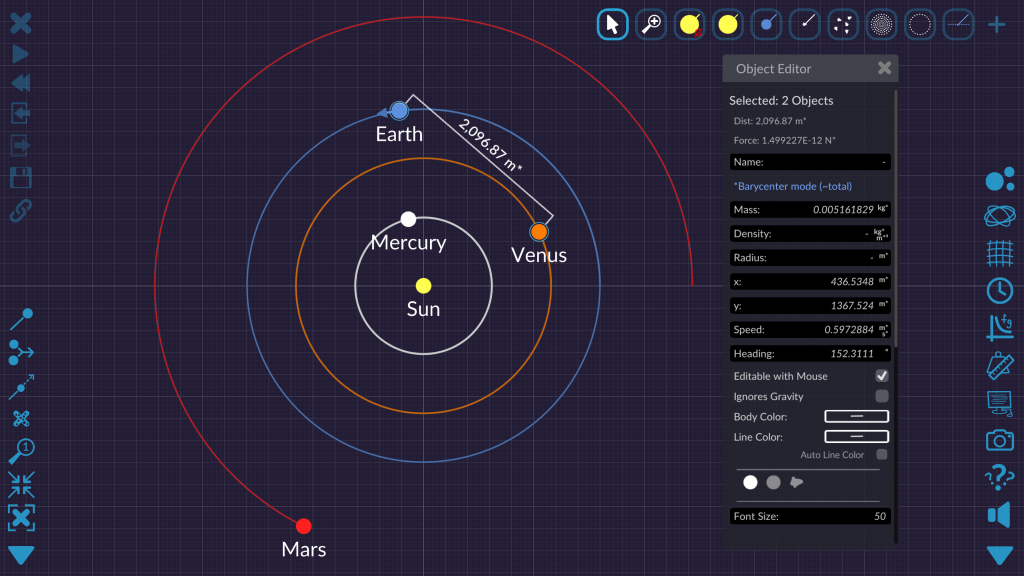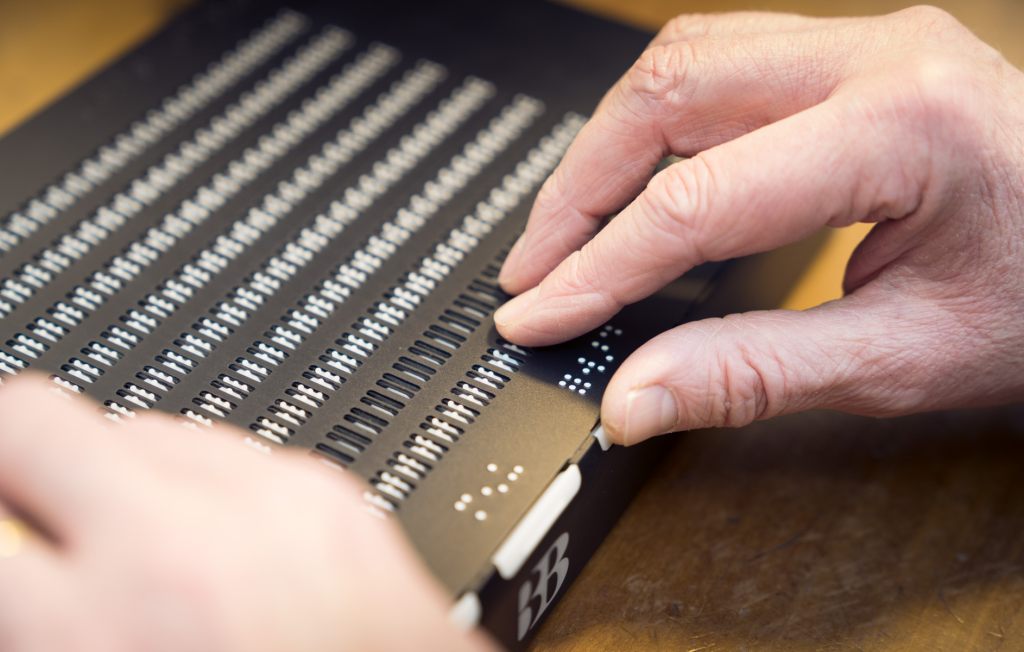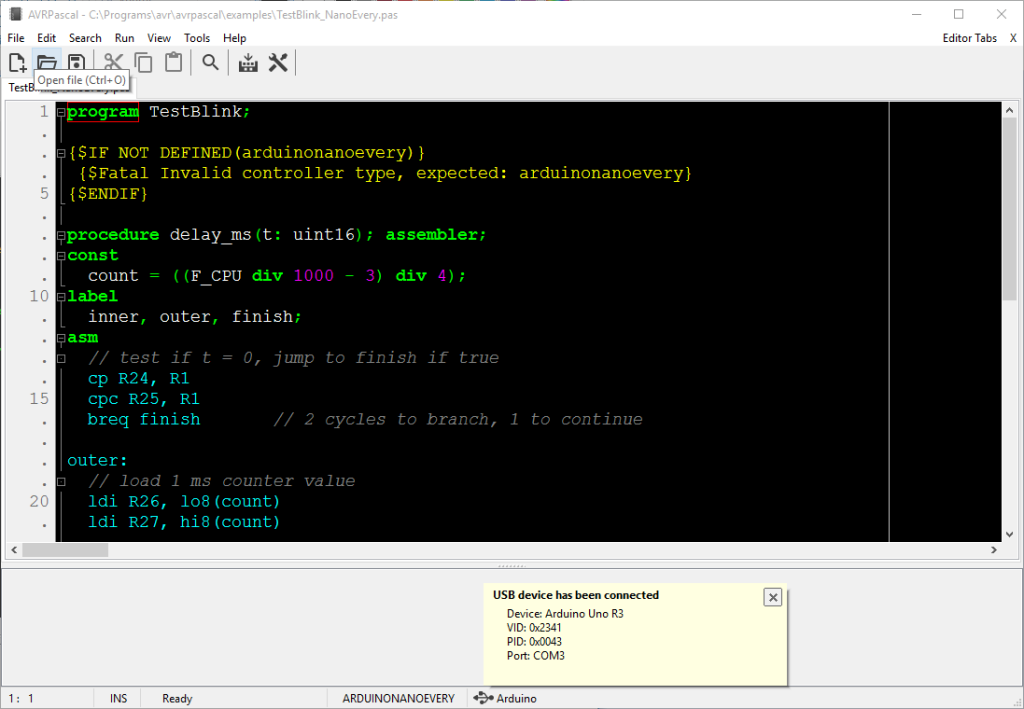If you’ve ever wondered how to repurpose an old smartphone display, you’re not alone. An old smartphone display can be a game-changing asset for DIY embedded projects, offering not only a vibrant screen but also a responsive capacitive touch interface. By utilizing your outdated device, you can integrate it seamlessly into your projects, especially with tools like the RemoteXY app, which enhances compatibility with Arduino. This setup allows for easy communication between your Android phone and Arduino, often through simple connections like USB-to-serial converters. Whether you’re aiming to create a custom Android phone interface or leverage touchscreen capabilities, using an old smartphone display is both practical and innovative.
Repurposing a vintage mobile device’s screen opens up a myriad of possibilities for hobbyists and DIY enthusiasts. An obsolete touchscreen can transform into a powerful display for your embedded systems, linking well with technologies like Arduino seamlessly. With applications such as RemoteXY, turning that older Android phone into a functional interface becomes effortless, guiding you through the setup process. Whether you’re crafting unique electronic projects or exploring new dimensions of technology, an aging smartphone display can be the key to bridging creativity with functionality. Embracing older technology provides not just a screen but a gateway to enhancing your tech-savvy endeavors.
Transform Your Old Smartphone Into a Touchscreen Display
Repurposing an old smartphone can breathe new life into your DIY embedded projects. With built-in displays and touch capabilities, these devices offer an excellent interface for your Arduino setups. Imagine the simplicity of controlling your embedded project with a capacitive touchscreen rather than fiddling with physical buttons or dials. This transformation is not only cost-effective but also revitalizes technology that might otherwise collect dust in a drawer.
To get started, you’ll need a basic understanding of how to connect your smartphone to an Arduino. Typically, this is accomplished using a USB-to-serial converter along with an OTG (On-The-Go) cable, allowing communication between the devices. Specifically, using a USB-C phone with Power Delivery will enable you to power the phone while maintaining a data connection. The beauty of this setup lies in its accessibility; you can use various Android models, like the Samsung Galaxy A8, and still achieve optimal results.
Utilizing the RemoteXY App for Arduino Integration
The RemoteXY app is a game-changer when it comes to connecting an Arduino with your old smartphone. This specialized application enables a seamless interface between your Arduino projects and the touchscreen capabilities of your Android device. Once installed, it leverages the RemoteXY library to create intuitive graphical user interfaces that make project control straightforward and engaging.
Setting up the RemoteXY app is relatively user-friendly, thanks to its point-and-click configuration wizard. This feature allows you to select the specific hardware you’re using and the method of connection with ease. Whether you’re designing basic controls or expanding into more complex functionalities, the RemoteXY app provides a solid foundation for building out your Android phone interface.
Advantages of Using Smartphones as Displays in Embedded Projects
Old smartphones not only offer high-resolution displays but also a range of powerful capabilities that can enhance your embedded projects. Compared to traditional displays, smartphones come with vibrant capacitive touchscreens, enabling users to interact with their projects in a more intuitive manner. Utilizing these devices for your Arduino projects can lead to a polished, professional look which may impress users and stakeholders alike.
Furthermore, using a smartphone to visualize data or control functionalities can significantly enrich the user experience. With the ability to play audiovisual feedback and support multitouch gestures, these devices can expand the possibilities for interaction in your embedded projects. Every DIY enthusiast should consider this approach, as it balances affordability with high performance, leveraging technology that is both familiar and feature-rich.
Connecting Your Arduino to Your Old Smartphone
To connect your Arduino to an old smartphone, the process begins with the right hardware setup. Start with a reliable USB-to-serial converter and an OTG cable that facilitates communication between your devices. Ensuring that your smartphone can handle simultaneous data and power transmission is crucial, so opting for a USB-C phone with Power Delivery capabilities becomes advantageous.
Once properly connected, the next step involves installing the corresponding apps required for your data exchange. The RemoteXY app is ideal for this purpose, offering a wealth of features that harmonize the connection between the smartphone and Arduino. With this setup, users are capable of not only monitoring data but also adjusting settings and controls via a touch interface, fostering an interactive experience that is essential in modern embedded projects.
Creating User-Friendly Interfaces with Arduino and Smartphone
Designing an effective user interface (UI) is vital for ensuring smooth interactions with your embedded projects. By utilizing your old smartphone’s touchscreen in tandem with an Arduino, you can create interfaces that are both engaging and practical. The versatility of smartphones allows for customizable layouts, meaning you can tailor your UI to fit the specific needs of your project.
With apps like RemoteXY, building intuitive interfaces becomes easier than ever. Users can drag and drop buttons, sliders, and graphs to map out their control panels. This level of customization ensures that whether your project requires simple control functions or more complex data visualizations, the touchscreen can adapt accordingly, making it a powerful tool for any DIY enthusiast.
Cost-Effective Solutions for DIY Embedded Projects
Repurposing old smartphones for embedded systems represents a cost-effective solution for DIY project makers. Instead of purchasing an entirely new display and control setup, utilize devices that are already within your reach. This approach not only saves money but also promotes recycling and sustainability in technology.
Moreover, the software required for this integration, like the RemoteXY app, is often free or low-cost, meaning you can achieve professional-grade interfaces without breaking the bank. By integrating old technology into your projects, you enrich your craft while adhering to budget constraints, making it a win-win for hobbyists and makers.
Exploring Versatility in DIY Projects
One of the most exciting aspects of using old smartphones with Arduino is the versatility they offer for various projects. From home automation systems to remote-controlled gadgets, the possibilities are virtually endless. With the ability to communicate through wireless protocols and the powerful hardware within smartphones, these devices can enhance the functionality of projects beyond traditional limits.
As users experiment with integrating their smartphones into embedded systems, they find innovative solutions to everyday problems. This includes using touchscreens to visualize sensor data, control lighting systems remotely, or even operate robotics projects—all from the convenience of a pocket-sized device. Thus, your creativity is the only limit when merging old smartphones with Arduino technology.
Enhancing Learning and Development with Arduino and Smartphones
For students and hobbyists, using an old smartphone with Arduino can serve as a rich educational experience. It imparts valuable skills in programming, electronics, and user interface design, providing hands-on learning opportunities that can foster a better understanding of embedded systems. Each project serves as a practical lesson in problem-solving and creativity, essential skills in technology.
Integrating the familiar environment of a smartphone allows learners to apply their knowledge in a meaningful way. By interacting with real-world applications through their embedded projects, students gain insights into how technology works and how to innovate. Overall, this combination enriches their portfolio of skills and prepares them for future technological endeavors.
Showcasing Your Projects with a Smartphone Interface
One of the key advantages of using an old smartphone as a display for your Arduino projects is the increased capacity for showcasing your work. You can create polished, visually appealing interfaces that are capable of presenting data and functionalities elegantly, ensuring that your projects not only work well but also look professional. This aspect can be particularly beneficial when presenting to peers or potential clients.
Using an interactive touchscreen format adds an additional layer of engagement, allowing viewers to experience firsthand how your project operates. By navigating through various screens and interface elements, users can appreciate the project’s features and functionalities directly through a familiar device, adding a ‘wow’ factor that can be very appealing in presentations or demonstrations.
Frequently Asked Questions
How can I use my old smartphone display as a touchscreen interface for Arduino projects?
To use your old smartphone display as a touchscreen for Arduino projects, you can connect your smartphone to an Arduino board using a USB-to-serial converter and an OTG cable. Install the RemoteXY app on your Android phone, which allows it to communicate with the Arduino, providing an easy way to create a graphical interface for your embedded projects.
What is the best way to power my old smartphone while using it as a display for Arduino?
The best way to power your old smartphone while using it as a display for Arduino is to use a USB-C phone with Power Delivery. This setup allows you to power the smartphone and maintain communication with the Arduino simultaneously through a single USB connection.
Can I use the RemoteXY app with any old Android smartphone display?
Yes, the RemoteXY app is designed to work with any compatible Android smartphone display, making it suitable for a range of devices. As long as your old smartphone supports the app and USB OTG, you can leverage its capacitive touchscreen for your Arduino projects.
What advantages does using an old smartphone display provide for DIY embedded projects?
Using an old smartphone display offers significant advantages for DIY embedded projects, including high-quality resolution, a responsive capacitive touchscreen, and integrated features like Wi-Fi and Bluetooth. This makes it easier to create interactive interfaces without investing in new display technology.
Are there specific old smartphone models recommended for using as a display in embedded projects?
While many old smartphone models can be used, devices like the Samsung Galaxy A8 from 2018 are often recommended due to their robust features and compatibility with Arduino setups. However, you can explore various Android phones that support USB OTG and the RemoteXY app.
How do I set up the graphical interface for my Arduino using an old smartphone screen?
To set up the graphical interface for your Arduino using an old smartphone screen, download the RemoteXY app and follow the point-and-click wizard to configure your project. You’ll select the hardware and connection type, allowing you to design a custom interface displayed on your smartphone.
What types of embedded projects can benefit from using an old smartphone display?
Old smartphone displays can benefit a variety of embedded projects, from home automation systems and IoT interfaces to robotics control panels and monitoring dashboards. The flexibility and touch capability enhance user interaction and project functionality.
Can I repurpose my old smartphone as a display for any Arduino board?
Yes, you can repurpose your old smartphone as a display for various Arduino boards, provided they support USB communication. Most Arduino models can interface with smartphones via the RemoteXY app and an appropriate USB-to-serial setup.
What are the limitations of using an old smartphone display compared to new screen technology?
The main limitations of using an old smartphone display include potential performance issues due to outdated hardware, compatibility with certain Arduino libraries, and battery life constraints if not adequately powered. However, the benefits often outweigh these limitations for many DIY enthusiasts.
Is it difficult to configure my old smartphone display using the RemoteXY app?
No, configuring your old smartphone display using the RemoteXY app is relatively straightforward. The app includes a user-friendly point-and-click interface that guides you through selecting your hardware and establishing connections, making it accessible even for beginners.
| Key Points |
|---|
| Old smartphones serve as excellent display and interface devices for embedded projects. |
| They offer high-quality screens and capacitive touch interfaces in one package. |
| Compatible devices include a range of Android phones, exemplified by the 2018 Samsung Galaxy A8. |
| Connect the smartphone to an Arduino using a USB-to-serial converter and an OTG cable. |
| Using a USB-C phone with Power Delivery is optimal for powering the phone while communicating with the Arduino. |
| The RemoteXY app facilitates communication between the smartphone and Arduino, following easy configuration steps. |
| Basic graphical interfaces can be created with guidance from resources like [Doctor Volt]. |
| Despite modern options, the resolution and quality of older smartphones remain unmatched in the embedded space. |
| This project idea is highly beneficial for DIY enthusiasts looking to build embedded systems. |
Summary
Old smartphone displays are an innovative and cost-effective solution for embedded projects, providing high-quality screens and touch interfaces that are often superior to many modern alternatives. With a simple setup involving apps and connections to Arduino, users can unlock the potential of their unused devices, crafting interactive interfaces with excellent resolution. This method not only promotes recycling and sustainability but also allows for creative experimentation in the world of embedded systems.



